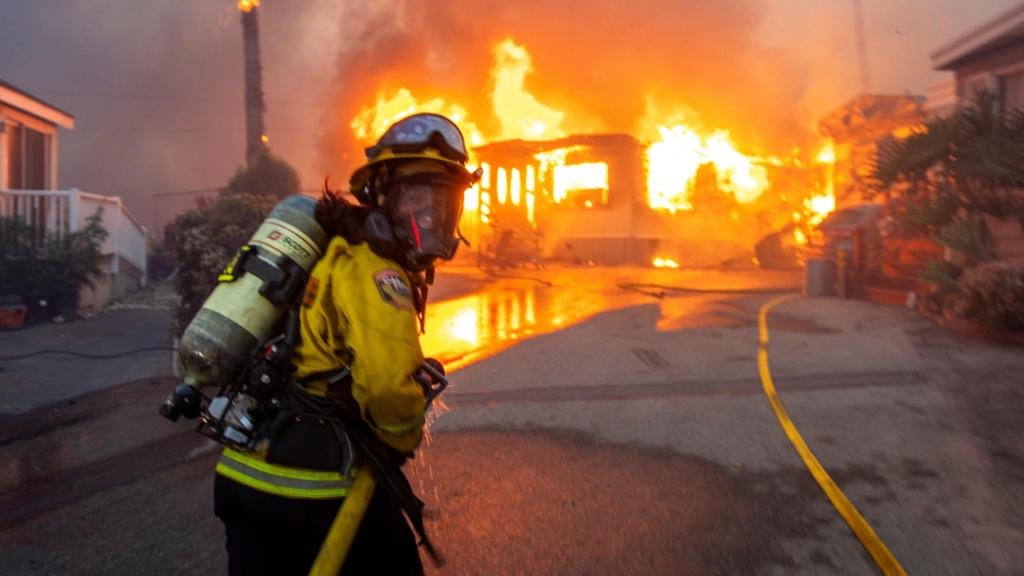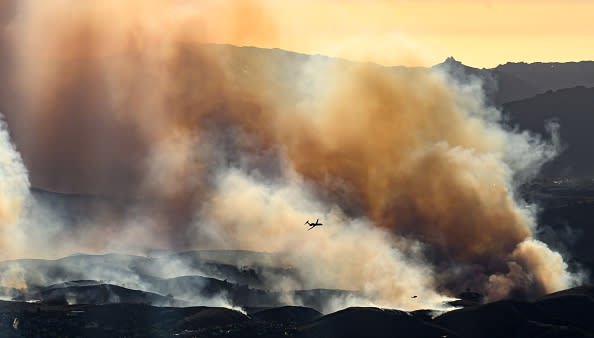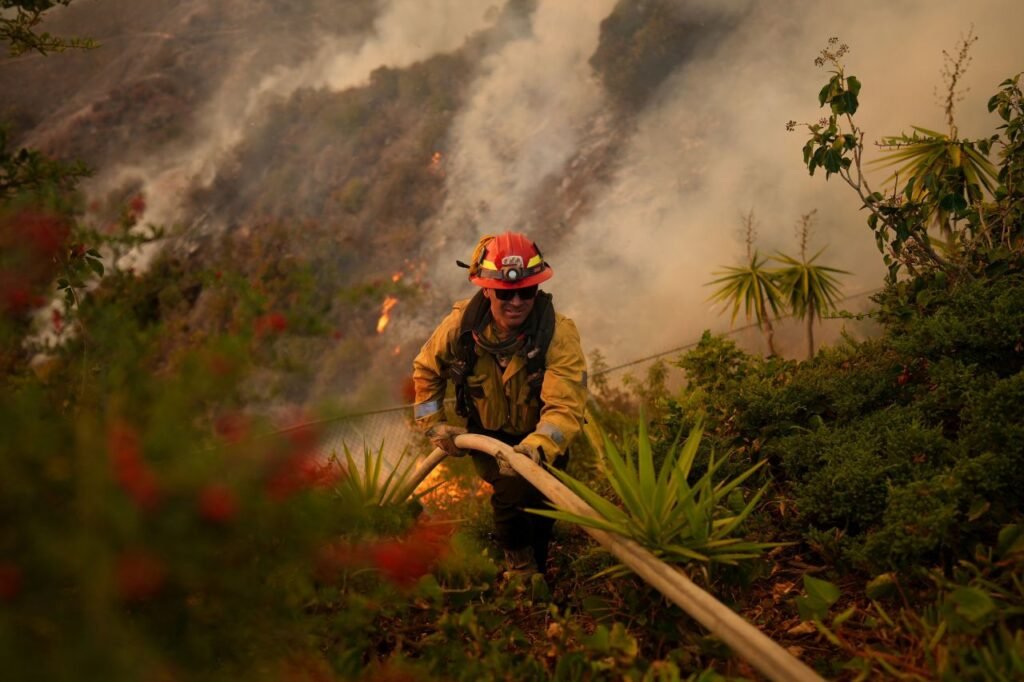Los Angeles, a city known for its vibrant culture, iconic landmarks, and stunning landscapes, has recently been struck by a devastating wildfire. As the city recovers, it’s important to keep in mind that the effects of the fire may still linger in certain areas, especially for tourists and visitors. Whether you are planning to visit the Hollywood sign, the Santa Monica Mountains, or the famous beaches of LA, understanding the precautionary measures, safety guidelines, and the best practices for staying safe is crucial. This blog will provide all the necessary advice to help you navigate areas affected by the wildfire safely.
Stay Updated on Fire Alerts and Conditions
Before heading out to explore, make sure you’re up-to-date with current wildfire conditions. Wildfires can spread quickly, and changes in wind or weather can lead to sudden shifts in fire activity. Tourists should:
- Check local news and official wildfire tracking websites for updates on areas that are under evacuation warnings or still at risk.
- Sign up for emergency alerts from local authorities or use apps designed to track wildfire activity in real-time, such as the CAL FIRE app, which will send alerts for your area.
- Monitor air quality: The wildfire smoke can affect air quality, so it’s important to stay informed about air pollution levels. Websites like AirNow provide up-to-date information on air quality indices.
Avoid High-Risk Areas and Follow Evacuation Orders
While Los Angeles is a sprawling city with many safe and open areas to visit, certain parts may be more susceptible to the effects of the wildfire. Tourists should:
- Avoid evacuation zones: Many neighborhoods in areas like Malibu, the Santa Monica Mountains, and parts of East LA have been under evacuation orders. Check for any advisories and avoid these areas.
- Heed the advice of local authorities: If an evacuation order is issued, follow it immediately. Authorities will provide clear instructions about where to go for safety and which routes to take.
- Stay away from fire-prone areas: Even if a specific neighborhood isn’t under evacuation orders, places close to the wildfire’s path may still be dangerous. Be cautious when visiting outdoor areas, including hiking trails and parks near fire zones, such as Griffith Park and Runyon Canyon, as they may be temporarily closed for safety reasons.

Protect Yourself from Smoke and Air Pollution
One of the most immediate risks during a wildfire is smoke inhalation, which can cause respiratory issues. Tourists and visitors should take these measures to protect their health:
- Stay indoors during poor air quality: If you can smell smoke or notice the air quality index (AQI) reaching unhealthy levels, it’s best to stay indoors, preferably in air-conditioned spaces that can filter out smoke particles.
- Use N95 masks: For individuals who need to be outdoors in areas with heavy smoke, wearing an N95 mask can provide protection from inhaling harmful particles.
- Avoid strenuous outdoor activities: If the air quality is poor, refrain from hiking, jogging, or any other physical activity that can exacerbate respiratory problems.
- Close windows and doors: If you’re staying in a hotel or rental property, close windows and doors to prevent smoke from entering. Keep ventilation systems on to filter the air.

Prepare for Evacuation, Just in Case
While Los Angeles authorities are working hard to ensure that tourists and residents remain safe, it’s always a good idea to be prepared for a potential evacuation:
- Know your escape routes: Familiarize yourself with exit routes and emergency shelters in your area. Make sure you know how to quickly leave the area if needed.
- Pack an emergency kit: In case you need to evacuate quickly, pack a bag with essential items such as identification, water, snacks, medications, phone chargers, a flashlight, and a first-aid kit.
- Stay connected: Keep your phone fully charged and carry an external charger. Make sure you have a way to contact family, friends, or local authorities if necessary.
- Follow local advice for sheltering: In some situations, staying indoors or seeking shelter in public facilities such as community centers may be recommended. Pay attention to advice on where to seek refuge.
Support Local Efforts and Be Respectful
Wildfires often leave long-lasting impacts on local communities. As a tourist, you can help in several ways:
- Respect closed areas: Many places may be temporarily closed to facilitate fire containment or recovery. Please respect roadblocks, closures, and any restricted areas.
- Donate to relief efforts: If you want to contribute to the recovery efforts, consider donating to organizations that provide aid to affected families, firefighters, and wildlife organizations. Your small contribution can help those who are rebuilding their lives.
- Follow fire safety rules: If you’re camping, hiking, or enjoying the outdoors, always follow proper fire safety rules. Never leave a campfire unattended, fully extinguish any flames, and dispose of cigarette butts responsibly.
Stay Calm and Trust Emergency Services
Wildfires are chaotic, but Los Angeles has an efficient and well-coordinated emergency response system. Here’s what you need to remember:
- Listen to first responders: If you see emergency personnel in your area, follow their instructions carefully. They are the best resource for keeping you safe.
- Stay calm: Wildfires can be overwhelming, but panicking will only make things worse. Remain as calm as possible and follow emergency protocols to protect yourself.

Be Mindful of Wildlife and Environmental Impact
The aftermath of a wildfire affects not only humans but wildlife and the environment as well. Visitors should be aware of the ecological impact:
- Respect nature: Wildfires often lead to the displacement of local wildlife, and animals may seek shelter in areas where humans frequent. Give wildlife plenty of space and do not approach animals, as they may be frightened or injured.
Be mindful of the terrain: The fire can create dangerous conditions, including the risk of landslides and unstable ground. Be cautious when venturing into areas that were recently affected by the fire, especially if the soil has been compromised.
Best Times to Visit Post-Wildfire Areas
While some parts of Los Angeles are still recovering from the fire, certain areas may be safe to visit once the smoke clears and emergency operations are complete. Keep these tips in mind for future visits:
- Choose areas far from active fire zones: The central parts of the city, the coastline, and the beaches are often unaffected by fires, so you can still explore these areas safely.
- Visit after the immediate danger has passed: Many tourist destinations may be temporarily closed or restricted right after the fire. Once local authorities confirm that it’s safe to visit, plan your visit accordingly.
- Check with your accommodations: Hotels and other accommodations will be well-informed about the fire status and will provide guidance about safe areas to visit or avoid.
